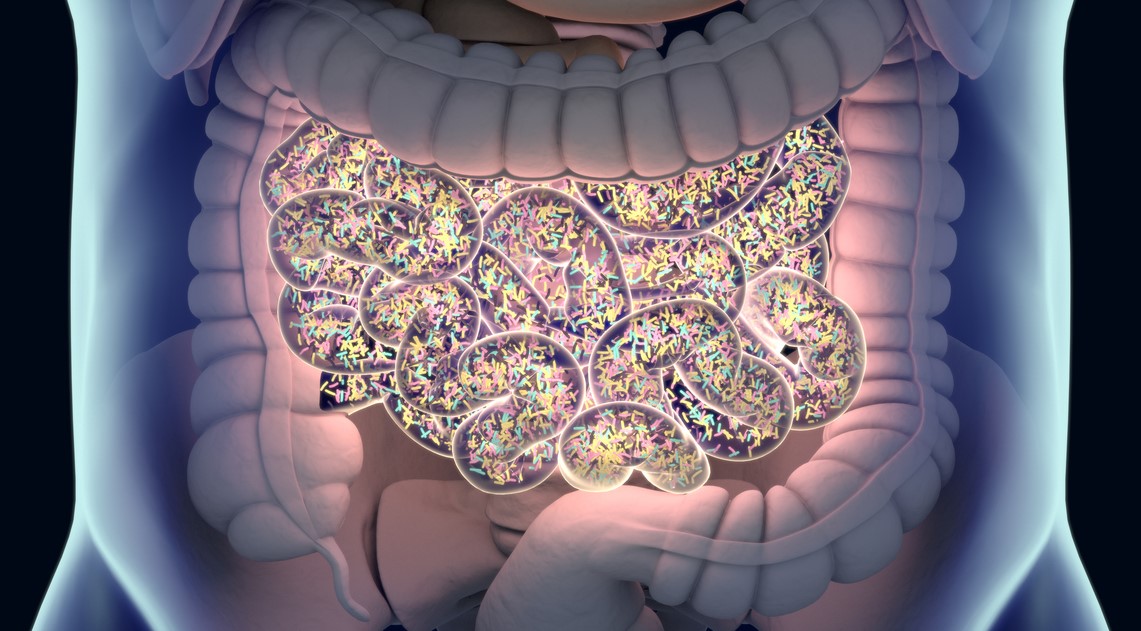2025-10-30
TNBC and the microbiome: bacteria in the crosshairs
Oncology
By Ana Espino | Published on October 30, 2025 | 3 min read
Triple-negative breast cancer (TNBC) is one of the most aggressive and heterogeneous forms of breast cancer. Lacking hormone receptors and HER2 overexpression, it escapes conventional targeted therapies, greatly limiting treatment options. Moreover, despite recent advances in immunotherapy, early relapse rates and mortality remain particularly high.
In light of the aggressiveness of TNBC and the lack of therapeutic targets, the role of the tumor microbiome has attracted growing interest. Studies have revealed the presence of specific bacterial communities within breast tissue, capable of modulating the tumor microenvironment through immune, inflammatory, and metabolic mechanisms.
In this context, the present study was designed to identify microbial signatures associated with TNBC.
The analysis included 200 breast tissue samples from four independent cohorts, involving patients with TNBC as well as other breast cancer subtypes. The researchers assessed intra-tumoral microbial diversity using alpha and beta diversity indices and compared the relative abundance of bacterial taxa between groups to detect microbial signatures specific to TNBC.
The study revealed a significantly reduced bacterial diversity in TNBC tumors, along with an enrichment of certain species—namely Gemmiger formicilis, Anaerobutyricum soehngenii, and Azospirillum oryzae—all of which are butyrate-producing bacteria. This short-chain fatty acid (SCFA) plays a paradoxical role: while anti-proliferative at high concentrations, it can be pro-inflammatory and pro-tumoral at low levels in certain contexts.
In parallel, functional analyses showed an overrepresentation of metabolic pathways related to steroid biosynthesis, fatty acid metabolism, and cell signaling, suggesting a direct influence of the microbiome on tumor biology.
TNBC remains a breast cancer subtype with a poor prognosis and very few targeted therapeutic options. This study sought to explore a largely uncharted dimension of the disease: the role of the tumor-associated microbiome. The findings reveal a distinct bacterial composition and metabolic profile in TNBC tumors compared to other breast cancer types, suggesting a direct microbial contribution to tumor progression. These insights pave the way for an integrative approach combining oncology, microbiology, and metabolism to better understand TNBC biology and uncover novel therapeutic strategies.
However, several important limitations remain : the retrospective nature of some datasets, the lack of in vivo functional validation, and the unclear mechanistic role of the identified bacterial species. Future research will need to include experimental models, longitudinal analyses, and translational studies to assess the potential of the tumor microbiome as a prognostic biomarker or therapeutic target in TNBC.
About the author – Ana Espino
As a scientific writer, Ana is passionate about bridging the gap between research and real-world impact. With expertise in immunology, virology, oncology, and clinical studies, she makes complex science clear and accessible. Her mission: to accelerate knowledge sharing and empower evidence-based decisions through impactful communication.
Triple-negative breast cancer (TNBC) is one of the most aggressive and heterogeneous forms of breast cancer. Lacking hormone receptors and HER2 overexpression, it escapes conventional targeted therapies, greatly limiting treatment options. Moreover, despite recent advances in immunotherapy, early relapse rates and mortality remain particularly high.
In light of the aggressiveness of TNBC and the lack of therapeutic targets, the role of the tumor microbiome has attracted growing interest. Studies have revealed the presence of specific bacterial communities within breast tissue, capable of modulating the tumor microenvironment through immune, inflammatory, and metabolic mechanisms.
In this context, the present study was designed to identify microbial signatures associated with TNBC.
Could microbes be fueling the tumor?
The analysis included 200 breast tissue samples from four independent cohorts, involving patients with TNBC as well as other breast cancer subtypes. The researchers assessed intra-tumoral microbial diversity using alpha and beta diversity indices and compared the relative abundance of bacterial taxa between groups to detect microbial signatures specific to TNBC.
The study revealed a significantly reduced bacterial diversity in TNBC tumors, along with an enrichment of certain species—namely Gemmiger formicilis, Anaerobutyricum soehngenii, and Azospirillum oryzae—all of which are butyrate-producing bacteria. This short-chain fatty acid (SCFA) plays a paradoxical role: while anti-proliferative at high concentrations, it can be pro-inflammatory and pro-tumoral at low levels in certain contexts.
In parallel, functional analyses showed an overrepresentation of metabolic pathways related to steroid biosynthesis, fatty acid metabolism, and cell signaling, suggesting a direct influence of the microbiome on tumor biology.
Toward a truly microbial oncology?
TNBC remains a breast cancer subtype with a poor prognosis and very few targeted therapeutic options. This study sought to explore a largely uncharted dimension of the disease: the role of the tumor-associated microbiome. The findings reveal a distinct bacterial composition and metabolic profile in TNBC tumors compared to other breast cancer types, suggesting a direct microbial contribution to tumor progression. These insights pave the way for an integrative approach combining oncology, microbiology, and metabolism to better understand TNBC biology and uncover novel therapeutic strategies.
However, several important limitations remain : the retrospective nature of some datasets, the lack of in vivo functional validation, and the unclear mechanistic role of the identified bacterial species. Future research will need to include experimental models, longitudinal analyses, and translational studies to assess the potential of the tumor microbiome as a prognostic biomarker or therapeutic target in TNBC.
Read next: TNBC: could everything be happening in the mitochondria?
About the author – Ana Espino
PhD in Immunology, specialized in Virology

Last press reviews
Dark chocolate: guilty pleasure or a renal ally?

By Ana Espino | Published on December 16, 2025 | 3 min read<br>...
A post-exercise infrared sauna session: a booster for neuromuscular recovery or just comfort?

By Lila Rouland | Published on December 15, 2025 | 3 min read<br>
Cinnamon: more than just a spice?

By Ana Espino | Published on December 12, 2025 | 3 min read<br>...